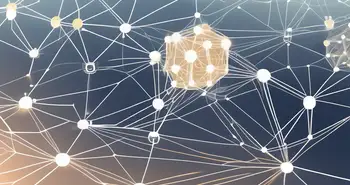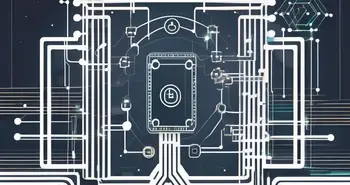The Impact of Orphaned Blocks on Blockchain Networks

Blockchain technology has revolutionized various industries by providing a decentralized and secure method of recording transactions. However, like any technological innovation, it is not without its challenges. One such challenge is the occurrence of orphaned blocks in blockchain networks. In this article, I will delve into the impact of orphaned blocks on blockchain networks and explore the causes, technical implications, economic consequences, and potential mitigation strategies.
Understanding Blockchain and Orphaned Blocks
Before we delve deeper into the impact of orphaned blocks, it's essential to establish a comprehensive understanding of blockchain technology. A blockchain is a revolutionary distributed ledger that serves as a digital record of all transactions occurring across a network of interconnected computers. Each transaction is grouped into a block, which is then cryptographically linked to the chain of preceding blocks, creating a secure and transparent ledger that is virtually tamper-proof.
Moreover, the decentralized nature of blockchain technology ensures that no single entity has control over the entire network, enhancing security and trust among participants. The use of consensus mechanisms, such as Proof of Work or Proof of Stake, further strengthens the integrity of the blockchain by requiring network participants to validate transactions through a process that prevents malicious activities.
Defining Blockchain Technology
Blockchain technology stands as a groundbreaking innovation that enables multiple parties to maintain a shared, immutable ledger of transactions without the need for intermediaries. By leveraging cryptographic algorithms and decentralized consensus mechanisms, blockchain networks ensure that data integrity is preserved, and transactions are securely recorded in a transparent manner.
What are Orphaned Blocks?
Orphaned blocks, also referred to as stale blocks, are valid blocks that have been mined but ultimately discarded by the network because they do not belong to the longest chain. This occurrence typically arises when multiple miners successfully solve the complex cryptographic puzzle required to add a block to the chain simultaneously. As a result, only one of these blocks can be incorporated into the main blockchain, while the rest are considered orphaned and left unattached to the primary chain.
Furthermore, orphaned blocks play a crucial role in the security and efficiency of blockchain networks, as they highlight the competitive nature of mining and the importance of maintaining a single, consensus-driven ledger. Understanding the dynamics of orphaned blocks provides valuable insights into the resilience and reliability of blockchain technology in handling potential conflicts and ensuring the integrity of transaction records.
Causes of Orphaned Blocks in Blockchain Networks
Numerous factors contribute to the occurrence of orphaned blocks in blockchain networks. Understanding these causes is essential in mitigating their impact and enhancing the overall efficiency of the blockchain.
One additional factor that can lead to orphaned blocks is software bugs or glitches in the blockchain network. These technical issues can sometimes cause delays or errors in block validation and propagation, resulting in the creation of competing blocks at the same height. Miners may unknowingly mine on top of a block that is later discarded by the network, leading to the orphaning of their blocks.
Network Latency and Orphaned Blocks
Network latency, the delay in transmitting data across the network, can significantly impact the occurrence of orphaned blocks. When multiple miners simultaneously solve the cryptographic puzzle, the block propagation time becomes crucial. Miners closer to the source of the broadcasted block have an advantage, resulting in a higher likelihood of their block becoming part of the main chain.
In addition to network latency, geographical distribution of miners can also play a role in the orphaning of blocks. Miners located in different regions may experience varying levels of network connectivity and latency, affecting the speed at which blocks are propagated. This geographical disparity can create opportunities for blocks from miners in well-connected regions to be included in the main chain more quickly, potentially orphaning blocks from miners in less connected areas.
Mining Power Discrepancies
Another cause of orphaned blocks is the discrepancies in mining power among participants in the blockchain network. Miners with greater computational power have a higher probability of solving the cryptographic puzzle before others. This power imbalance can lead to the creation of multiple blocks at the same height, resulting in the eventual orphaning of some blocks.
The Technical Impact of Orphaned Blocks
Orphaned blocks can have several technical implications within a blockchain network.
When a block is orphaned, it means that it is no longer part of the main blockchain due to a competing block being added to the chain first. This can occur when multiple miners find valid blocks at almost the same time, causing a temporary fork in the blockchain. Orphaned blocks are not considered valid by the network and are eventually discarded, leading to potential disruptions in the network's operations.
Effect on Transaction Verification
Orphaned blocks impact the transaction verification process within the blockchain network. When a block becomes orphaned, the transactions included in that block are not confirmed, leading to a delay in their finalization. This delay can negatively affect the overall transaction speed and efficiency of the blockchain network.
Transactions that were initially included in the orphaned block must be revalidated and added to the new block that gets accepted by the network. This revalidation process can introduce complexities and increase the computational resources required for transaction verification, further slowing down the network's performance.
Impact on Blockchain Security
The occurrence of orphaned blocks can also potentially impact the security of the blockchain network. If a malicious participant gains control of a significant portion of the mining power, they can intentionally create multiple blocks in an attempt to disrupt the network. This can undermine the integrity and reliability of the blockchain's consensus mechanism.
Furthermore, orphaned blocks can create opportunities for double-spending attacks, where a malicious actor attempts to spend the same cryptocurrency twice by exploiting the temporary fork in the blockchain. This type of attack can erode trust in the network and lead to financial losses for legitimate users and businesses operating within the blockchain ecosystem.
Economic Consequences of Orphaned Blocks
The occurrence of orphaned blocks can have significant economic consequences within a blockchain network.
Influence on Mining Rewards
One economic consequence of orphaned blocks is the impact on mining rewards. Miners invest substantial computational power and resources to solve the cryptographic puzzle and add blocks to the network. However, when their block becomes orphaned, they lose the associated mining rewards, affecting their profitability.
Implications for Transaction Fees
Orphaned blocks can also impact transaction fees within the blockchain network. When a block becomes orphaned, the transactions within that block are not included in the main chain and must be re-submitted. This can result in duplicate transaction fees for the parties involved, leading to increased costs and inefficiencies.
Mitigating the Impact of Orphaned Blocks
To mitigate the impact of orphaned blocks, several strategies can be employed within blockchain networks.
Blockchain Protocol Adjustments
One approach is to make protocol adjustments that reduce the occurrence of orphaned blocks. This can involve optimizing the block propagation mechanism, increasing block size limits, or implementing improved consensus algorithms. These adjustments aim to enhance the speed and efficiency of the blockchain, reducing the likelihood of orphaned blocks.
Role of Mining Pools in Reducing Orphaned Blocks
Mining pools play a vital role in reducing the occurrence of orphaned blocks. By pooling their computational power, miners increase their chances of successfully mining a block. When a block is mined by a mining pool, the rewards are distributed among participating members, reducing the negative impact of orphaned blocks on individual miners.
As an expert in the field of blockchain technology, I have witnessed firsthand the impact of orphaned blocks on blockchain networks. It is vital for blockchain developers, miners, and network participants to be aware of these challenges and work towards implementing effective strategies to mitigate their impact.
By continuously improving the technical aspects of blockchain networks and fostering collaboration among participants, we can build more resilient and efficient systems that enable a truly decentralized future.
FAQ
What are orphaned blocks?
Orphaned blocks, also known as stale blocks, are valid blocks that are discarded by the network because they are not part of the longest chain.
What causes orphaned blocks in blockchain networks?
Orphaned blocks can occur due to factors such as network latency and mining power discrepancies. Network latency affects block propagation time, while mining power discrepancies create multiple blocks at the same height.
What are the technical implications of orphaned blocks?
Orphaned blocks can affect transaction verification and impact the security of the blockchain network by potentially allowing malicious participants to disrupt the consensus mechanism.
What economic consequences are associated with orphaned blocks?
Orphaned blocks can influence mining rewards and transaction fees within the blockchain network, potentially impacting profitability and increasing costs.
How can the impact of orphaned blocks be mitigated?
Mitigating the impact of orphaned blocks can involve making blockchain protocol adjustments and leveraging the collaborative efforts of mining pools.
As an expert in the field, I advise staying informed about the latest advancements and best practices in managing orphaned blocks to ensure the optimal performance and security of blockchain networks.
As we navigate the complexities of blockchain technology and the challenges posed by orphaned blocks, it's clear that innovative solutions and platforms are essential for a robust trading experience. Morpher.com stands at the forefront of this revolution, offering a unique trading platform that harnesses the power of blockchain to provide zero fees, infinite liquidity, and a secure, user-centric environment. Whether you're interested in stocks, cryptocurrencies, or exploring new asset classes like NFTs, Morpher empowers you with fractional investing, short selling, and up to 10x leverage to enhance your investment strategies. Embrace the future of trading by signing up with Morpher today and receive your free sign-up bonus to start your journey towards democratized, innovative investing.

Disclaimer: All investments involve risk, and the past performance of a security, industry, sector, market, financial product, trading strategy, or individual’s trading does not guarantee future results or returns. Investors are fully responsible for any investment decisions they make. Such decisions should be based solely on an evaluation of their financial circumstances, investment objectives, risk tolerance, and liquidity needs. This post does not constitute investment advice.

Painless trading for everyone
Hundreds of markets all in one place - Apple, Bitcoin, Gold, Watches, NFTs, Sneakers and so much more.

Painless trading for everyone
Hundreds of markets all in one place - Apple, Bitcoin, Gold, Watches, NFTs, Sneakers and so much more.









